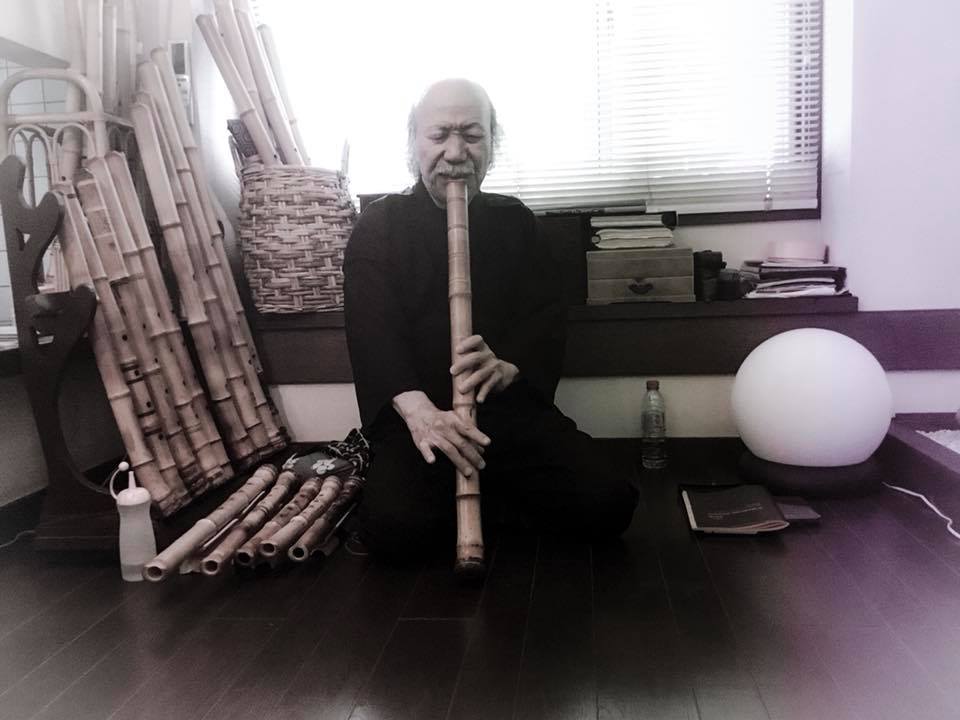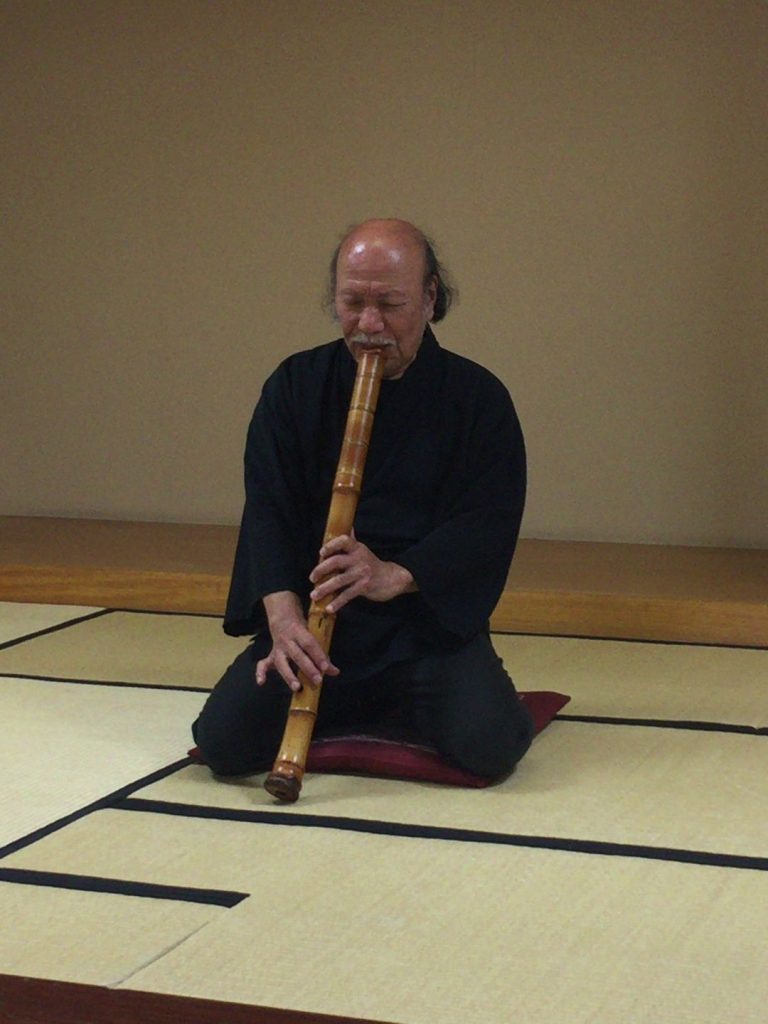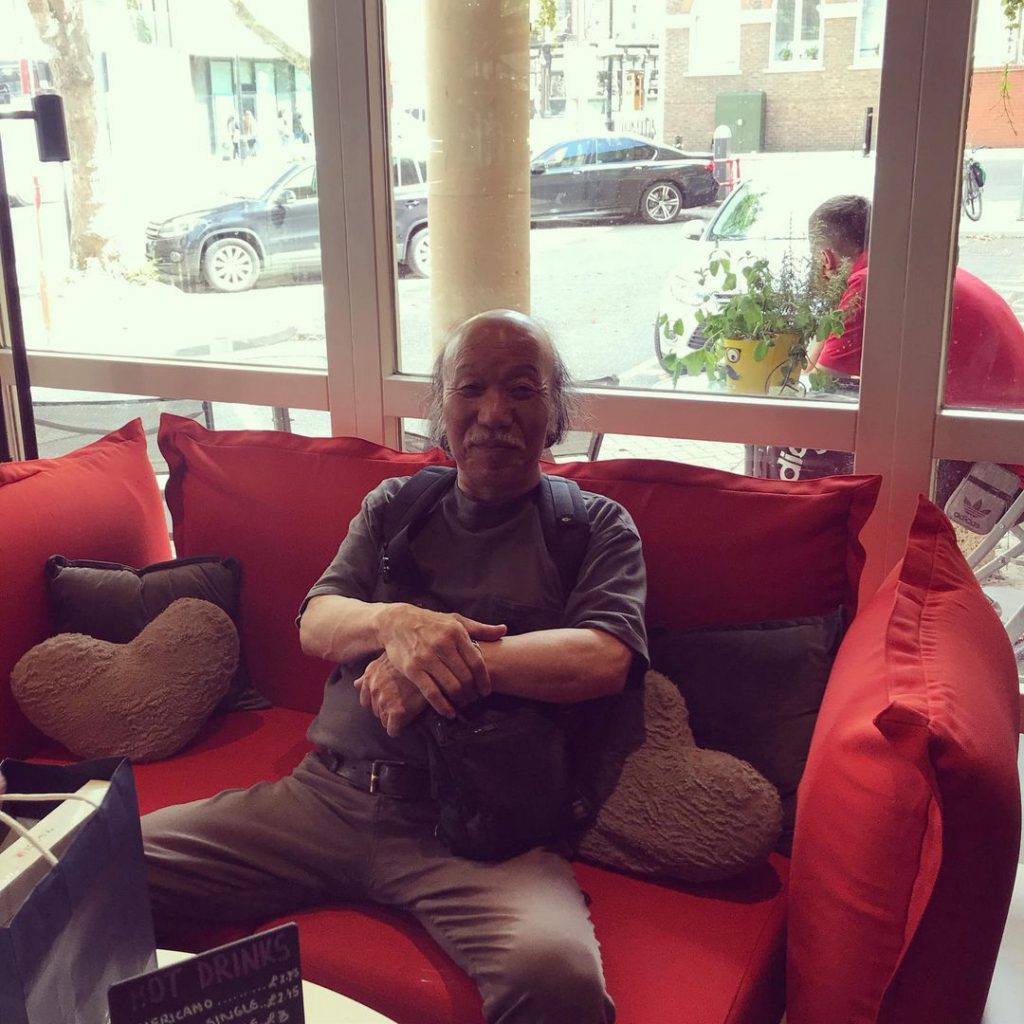Gary Roba 10 May 2018:
“Many Japanese shakuhachi players prefer inside-the-box playing, but I like outside-the-box playing.” – Atsuya Okuda“Not-free, but Free.” – IbidOkuda Sensei mentioned the obvious in a lesson this week; nobody really knows what the Komuso actually sounded like. There are no recordings. What we do know is that their shakuhachi practice was a form of zen, ‘suizen’ (or ‘blowing-zen’). Their playing was therefore aimed at the possibility of freedom, freedom within form… freedom within the form of the human life experience. Given that context, it is difficult to imagine their way could have been ‘inside-the-box’ repetitive style playing. In the known history of world flute traditions, one could hardly find a more out-of-the-box approach. (All due respect to the Mevlana Rumi inspired ney).Interestingly, many western free-improvisers regularly contact Okuda Sensei to invite him to play with them. He has long been surprised by the requests, and always declines the offer. I speculate that Atsuya Okuda’s outside-the-box playing sounds completely free to a western musician’s ear. And particularly so when compared to the more popular inside-the-box style most contemporary shakuhachi players follow, which sounds more like classical music (and is often marketed as such). Okuda Sensei’s playing is ‘free, but not-free.’ Sometimes he plays a piece so outside-the-box, with such creativity and spontaneity that I would hardly be able to recognize it if I didn’t already have it memorized. But, there is still a box! It is not just random freedom. And even when he’s just purely improvising, he is still following that mysterious language that weaves through all of the honkyoku, which is an aural image of the language of nature itself. A cricket’s chirping is not just random sounds; it has a form and a language. In Okuda Sensei’s words, “a monkey randomly throwing paint at the wall is not the same as Picasso.” So, although we can never objectively know, what might the Komuso have sounded like? The Komuso… who, using the bamboo shakuhachi as a primary method of practice, devoted their lives monastically to the inexpressible freedom zen points towards… who left behind 150+ honkyoku compositions that their practice was based on… compositions that were played during the meditative practice of “suizen, for alms, as a method of attaining enlightenment, and as a healing modality” [Wikipedia]… the Komuso, who meandered the countryside wearing straw baskets on their heads as they played shakuhachi, to represent the absence of a personal self… what might their ‘music’ have sounded like? If we tried to literally reproduce it, that could not possibly be it. But if we instead oriented our playing towards the spirit of it: “Outside the box… not-free, but Free…”

Kazuhisa Azuma 16 September 2019:
本日は、奥田敦也先生が主宰する「禅の音 研究会」が、国分寺の本多公民館で開催されました。 奥田先生は、尺八古典本曲、三谷清撹(さんやせいらん)と布袋軒鈴慕(ふたいけんれいぼ)を吹かれました。 微細な極小の音から、倍音の効いた野太いロ音まで、奥田先生の地無し延べ管の比類なき音色に、泣くような、深い感動を覚えました。 紛れもない本物の天才が、ここに居ます。
Today, the Zen Sound Study Group, presided by Master Atsuya Okuda, was held at the Honda Community Center in Kokubunji. Master Okuda played the shakuhachi classic pieces called Sanya-seiran and Futaiken-reibo. From the finest sounds to the thick, deep sounds with ro-tones, Master Okuda’s unparalleled tone of jinashi-nobekan-shakuhachi made me feel deeply moved. Here is an unmistakable real genius.

Avi Abramovitch 11 August 2018
Now here, things are getting interesting. Till the first minute, you can hear Okuda san playing, then, mistakenly, I think it records in slow motion. (not that I ever used that feature)…Forget anything you knew about techno music…
Masumi Orimo 7 August 2018
奥田敦也先生
初めて先生の演奏を聴くことができました。
とてもとても感動しました。
奥田先生の人間力と言ったら!♡
ファンです。

